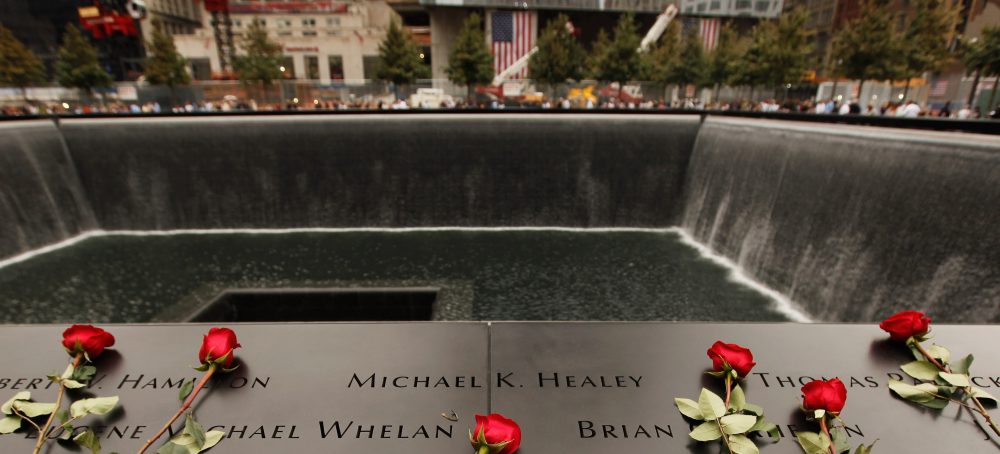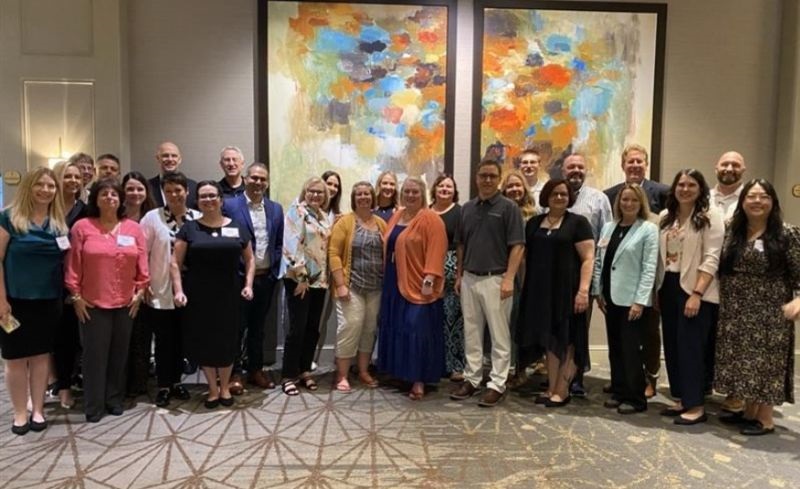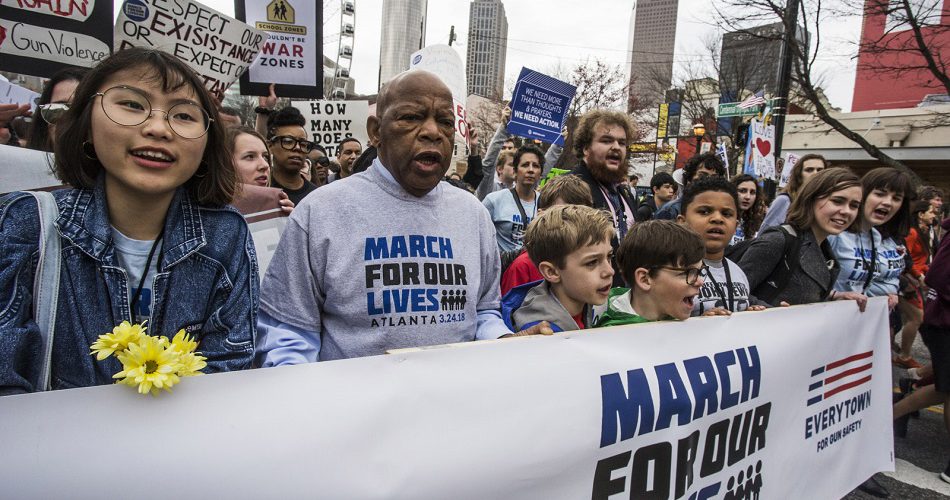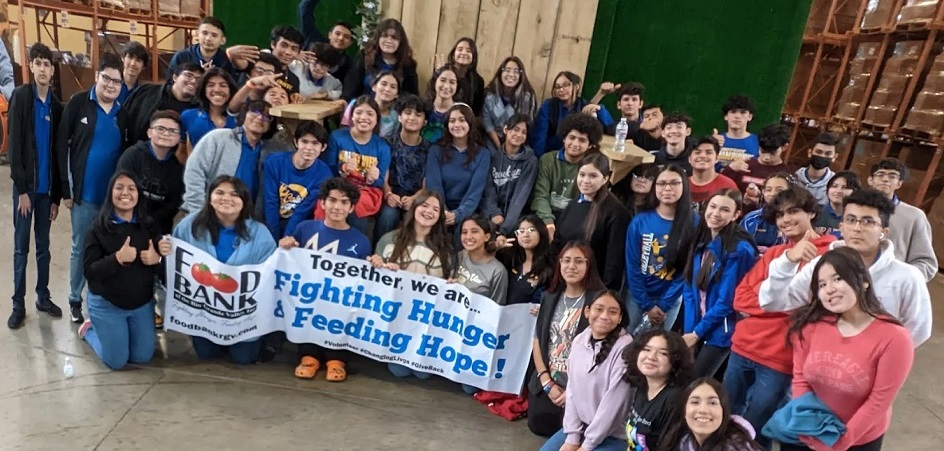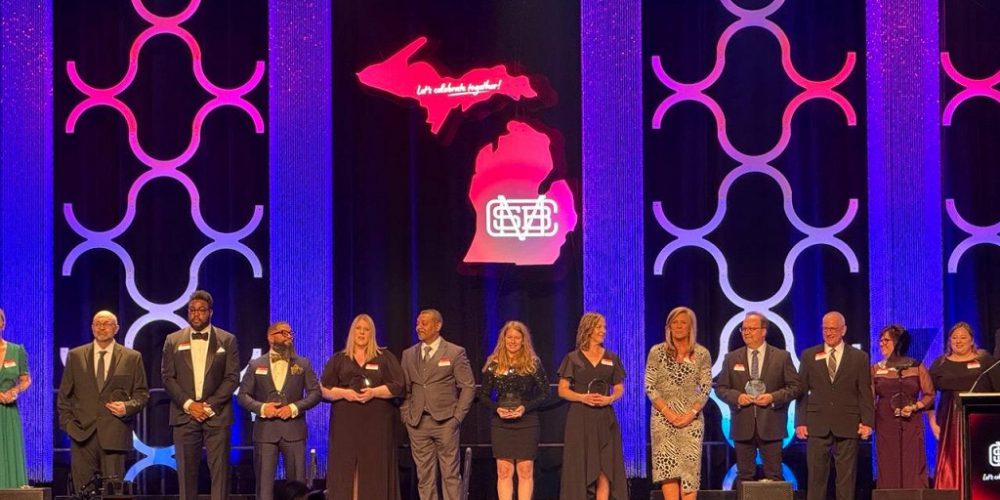Is the United States really facing “a pandemic of loneliness and isolation”?

If America was a nation of joiners in the 1800s, as many recognized historians of the time noted, this is definitely not the case today. Modern scholars have documented a broad-based decline of American civic and community life that extends beyond membership.
American social and civic life was once defined by diverse programs, clubs, groups, and organizations. “However, it has declined by every conceivable measure since the mid-20th century,” states the 2024 American Social Capital Survey conducted by the Survey Center on American Life.
Today’s Americans have fewer civic opportunities—that is, places, institutions, groups, programs, and activities in which they can experience community life. Americans participate in organized activities less often and join fewer community groups than they once did. Relatedly, Americans have smaller social networks and fewer friends, and they spend less time with their friends, neighbors, and family members. This state of affairs has led Surgeon General Vivek Murthy to declare the United States is facing an “epidemic of loneliness and isolation.”
But America’s civic decline has not affected all groups equally. Americans with college degrees often reside in communities with abundant civic opportunities and thriving civic cultures. They participate in associational life at high rates and have robust social and friendship networks. In contrast, the relational lives of Americans without college degrees have contracted dramatically—compared to Americans with these degrees today and without them in the past. Two institutions that were formerly crucial sources of civic connectedness for less educated Americans – unions and churches – are now more likely to serve college graduates.
Other civic opportunities are becoming stratified along educational lines. “Americans with a high school education or less are more likely to live in civic deserts, lacking commercial and public places (e.g., community centers, parks, coffee shops, and libraries) that are hubs of community connection,” the researchers say.
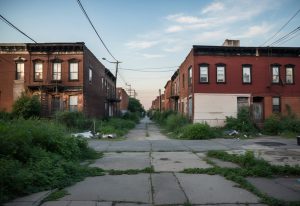
Partly as a result, these Americans are less likely to participate in associational life and more likely to be socially isolated. As Timothy P. Carney writes in Alienated America: Why Some Places Thrive While Others Collapse, associational life has apparently become “a high-end good” that most people can’t access.
Despite the importance of community and relationships to human flourishing, “there are substantial gaps in our understanding of how race and class constrain opportunities for community connection,” the researchers note.
The 2024 research is based on a large national survey of more than 6,500 American adults. The researchers conducted follow-up qualitative interviews with 20 survey respondents to contextualize and extend the survey’s findings. This survey’s findings meaningfully contribute to the research on Americans’ changing communal and relational lives. The educational gap has persisted—and even expanded—since the Survey Center published its previous survey research, and it is the dividing line across nearly every domain of social capital they measured. The research found substantial disparities by educational attainment and race. For instance, African Americans without college degrees are significantly more disconnected than every other group in American life. For Americans without degrees—particularly African Americans—the civic opportunities, responsibilities, and relationships that imbue life with meaning seem increasingly out of reach.
Visiting Public Places: Libraries, Parks, Gardens, and Community Spaces

Public libraries—often celebrated for their capacity to nurture civic life and bolster community participation—are not widely used. Sixty-three percent of Americans report “never” or “seldom” visiting a library in the past 12 months, and 18 percent say they visit only “a few times a year.” Just 17 percent of Americans report visiting a library at least once or twice a month.
Commercial and Public Gathering Places
When they are not at home or work, Americans spend time at various public and commercial “third places.” These include parks, public gardens, restaurants, bars, and community centers. However, not all Americans report that these places are hubs for community interaction.

This may be due to a myriad of factors, including geographic challenges (e.g., few gathering places in the community), cultural issues (e.g., perceptions of non-belonging), and financial concerns (e.g., the expense of going out).
Of the various commercial spaces in the US, restaurants and diners are mentioned most often by Americans as places where they can congregate with neighbors and other community members. Less than half of Americans report that people in their community can gather in restaurants or diners (46 percent), coffee shops or cafés (41 percent), gyms or fitness centers (37 percent), and local markets or corner stores (35 percent). Relatively few Americans report they can spend time with their neighbors in bookstores or other retail spaces (20 percent) and barbershops or hair salons (22 percent).
Americans With More Places To Gather Have More Close Friends
The density of civic infrastructure and the robustness of American friendship networks correspond remarkably closely. Americans with less access to civic infrastructure—such as parks, coffee shops, and libraries—have many fewer friends and report greater difficulty making social connections. Americans with no access to public or commercial places are more than three times more likely than those with the most access to report having no close friends (32 percent vs. 9 percent).
Many interviewees could not identify any place they could go to be around their neighbors. Faith, a 27-year-old college graduate, said, “I feel like you would have to go really out of your way to meet people, you know. Generally speaking, nobody’s just hanging outside, you know. I have seen people, like, on occasion, you know, going in as I’m coming out or something like that.”

Neighborly Interactions
The frequency of neighborly interactions and the time Americans spend out and about in their neighborhoods vary widely. As America’s neighborhoods have become more segregated along class lines—and remained highly segregated along racial lines—the public experience there has followed the same patterns.
Walking the Neighborhood
For most Americans, walking around their neighborhood is a common experience.
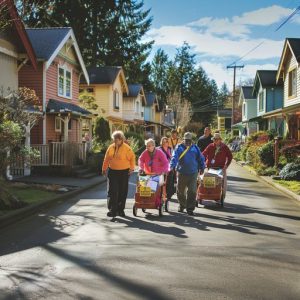
Overall, 55 percent of Americans report taking neighborhood walks once or more per month, including 39 percent who report taking them at least once per week. Thirteen percent of Americans say they walk around their neighborhood a few times a year, while approximately three in 10 (31 percent) “seldom” or “never” take walks.
Neighborhood walking has a racial gap that cuts across educational background but is especially pronounced among those with a college education. White Americans with college degrees walk around their neighborhoods significantly more than any other group. Nearly three-quarters of white college graduates (73 percent) take neighborhood walks at least once per month—including 56 percent who take them once or more per week—while only 47 percent of Afro-Americans with college degrees report taking neighborhood walks once or more per month. Nearly one-third (32 percent) of Afro-Americans with college degrees report “seldom” or “never” taking walks, compared to just 15 percent of college-educated whites.
Conversations with Neighbors
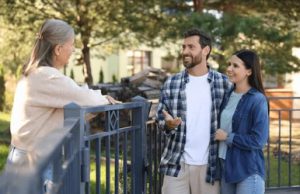
Americans still have conversations with people in their community they do not know well, but not frequently. Less than half (47 percent) of Americans report speaking with a neighbor they do not know well at least a few times per year. Only about one-quarter (26 percent) report having these conversations once or more per month. In contrast, half (50 percent) of Americans report “seldom” or “never” talking to someone in their community they don’t know well.
White Americans with college degrees are the most likely to have these conversations. More than six in 10 (61 percent) white college grads report conversing with neighbors they do not know well at least a few times per year—including 34 percent who do so once or more per month—while 38 percent “seldom” or “never” have these conversations. Hispanics and Afro-Americans are far less likely to converse with strangers, a pattern that holds at every level of educational attainment. Among those with college degrees, more than half (53 percent) of Hispanics and half of Black Americans “seldom” or “never” converse with community members they don’t know well.
Do Neighborhood Interactions Increase Trust?
Neighborhood interactions and social trust are strongly linked. Americans who walk around their neighborhood more than once a week are much more likely than those who seldom or never do to say they can generally trust people (39 percent vs. 21 percent).
This connection is far stronger among those who at least occasionally engage their neighbors in conversation, which suggests these social interactions are a crucial component of trust. Americans who are predisposed to trust others might also feel more comfortable walking around their neighborhoods and engaging with people they do not know well. Notably, the relationship between neighborhood walks and social trust is stronger among Americans without a college education.
In the interviews, the researchers heard firsthand about how a lack of social trust might inhibit social interactions among neighbors. One interviewee, Sarah, a 37-year-old from Pennsylvania, said past negative encounters with neighbors had made her wary of extending herself. “I’m kind of introverted, so I don’t really like talking to people very often and introducing myself. I kind of just tend to stick to myself, especially since I had a lot of issues with neighbors in the past. Moving here, I just kind of don’t bother.”

Unattached: America’s Continuing Civic Slide
Most Americans are not joining groups. Despite the decline in religious membership over the past three decades, Americans are still more likely to be members of religious organizations (33 percent) than of any other group.

Beyond religion, Americans join little. Fewer than one in 10 (7 percent) Americans today are members of labor unions. Fewer than two in 10 Americans belong to each of the following community groups: hobby or activity groups (17 percent), neighborhood associations (15 percent), and sports leagues or workout groups (only 10 percent). Just 16 percent of Americans belong to parent groups or youth organizations.
The drop in organizational membership has not affected all Americans evenly. Americans with college degrees continue to join at relatively high rates. Americans without degrees, in contrast, are increasingly unattached.
Civic Participation: Attending Local Meetings and Events, Volunteering
Today, regular attendance at local events and participation in community activities have become exceptions rather than norms, the survey says. Overall, relatively few Americans report participating in local meetings, attending community events, or volunteering regularly. Fewer than half (44 percent) of Americans say they attend a social event in their community, such as a high school football or basketball game, even a few times a year. Even fewer Americans say they volunteer (28 percent) or attend a meeting (33 percent) in their community at least a few times a year.

Even if Americans have a civic spirit, a lack of resources can limit their ability to volunteer. Paul, an unemployed 47-year-old from Texas, desires to more actively participate in community life but faces transportation barriers. Of volunteering, he said, “I wanna do more. I am still trying for Social Security, ’cause I’ve tried to work . . . and I can’t physically or mentally do it anymore.” He continued, “Once I get an income, like, and I get a vehicle, like, I’m gonna go, like, volunteer somewhere—just to do something for other people, you know. Just wanna volunteer ’cause I like to, but I can’t because of limited funds and transportation.”
Hosting Neighbors, Friends, and Family
Most Americans still invite friends, family, or neighbors to their homes. Overall, two-thirds (66 percent) of Americans host friends, family, or neighbors at least a few times per year—including 37 percent who have guests at least once or twice a month.

One-third (33 percent) of Americans seldom or never host people at their homes.
However, there are profound racial divisions in how frequently Americans host friends, family, and neighbors. Hispanics and whites with college degrees report having neighbors and friends over to their homes most frequently. More than four in 10 whites (45 percent) and Hispanics (44 percent) with college degrees host friends, family, or neighbors at least once or twice a month. In contrast, only 27 percent of Afro-Americans with four-year degrees report hosting once or more per month. Black Americans with a high school education or less are the least likely to have guests in their homes: Only 24 percent say they do this at least one or twice a month.
Civic Superheroes: College-Educated Parents
One group stands out for its relatively high levels of civic effort and community care: college-educated parents. Fully half (50 percent) of college-educated mothers and more than four in 10 (42 percent) college-educated fathers report volunteering in their community at least a few times a year. Nearly three in 10 (27 percent) college-educated mothers volunteer at least once or twice a month.
American Friendships After the Pandemic
American friendship has contracted in recent years. In 2021, the researchers found that American friendship circles were significantly smaller than a generation earlier. Three years later, with pandemic social restrictions behind people, they found that the size of American social networks has not recovered.
Today, 17 percent of Americans report having no close friends—a category that excludes close relatives.

This is only a modest increase from 2021, when 12 percent of Americans reported they had no close friends. 18 percent of Americans have one or two close friends. About one-third (34 percent) of Americans have three to five close friends, and one-quarter (25 percent) have six or more.
The pandemic cast a long shadow on Americans’ social lives. The researchers spoke to Cheryl, a 54-year-old college graduate who moved to Florida at the start of the pandemic to care for her elderly mother. “Yeah, I would say the pandemic is probably why I don’t know many people here or interact with many people here,” she said. “I’m still afraid to get too close to people. You know, if I caught COVID, it wouldn’t be pretty, I don’t think. And also, I have my mother, who’s 86 years old; I definitely wouldn’t want to give it to her. So I guess the pandemic is still affecting the way I interact with people.”
On Whom Do Americans Rely, and for What?
Despite America’s weakening social ties, most Americans report having numerous people who can offer them social support. Roughly two-thirds of Americans say at least a couple people could give them a ride (66 percent), offer emotional support (66 percent), or help them move (65 percent). Six in 10 Americans say at least a few people would be willing to take them to a doctor’s appointment (61 percent) or offer them a place to stay for a few days (60 percent).

Sixty-two percent of parents say they know at least a couple people who could watch their kids for a short time in an emergency. Fifty-seven percent of Americans say they could turn to a few people if they needed to borrow $200. Only about half of Americans say they could turn to at least a couple people to help them find a new job (53 percent) or take care of them if they got sick (50 percent).
Andrew, a 37-year-old from Washington, was asked whether he has people in his life he could rely on for support. He answered, “I guess if it was a money situation or something like that, then yes, there’s probably people I could turn to. If it was, like, an emotional deal, there’s not very many people I would turn to.”
Parents, Spouses, and Partners: The People Who Support Us
By far, the first person most Americans turn to when facing a personal problem is a romantic partner or spouse. Nearly half (49 percent) of Americans say they would first turn to them in this situation.
The next most common person Americans report they would contact when facing a personal challenge is a parent. According to 14 percent of Americans, their parents are the people they would first go to with a problem. Twelve percent of Americans say they would first turn to another family member, such as a sibling, while 11 percent say they would first turn to a close friend if they needed help. Only 4 percent of Americans report there is no one they could rely on for personal support.
Young adults (age 18 to 29) are most likely to rely on their parents: 42 percent say they would call first on their parents to help them handle a personal problem. But there are crucial gender divisions among young people on this point. Young men are significantly more likely than young women to rely on their parents for personal support. Nearly half (46 percent) of young men, compared to 37 percent of young women, say they would go first to their parents with a personal problem.

Young women are significantly more likely than young men to rely on a partner or spouse for help with a personal problem (33 percent vs. 22 percent).
Young men’s close reliance on their parents for personal support is partly because of their living situation. Young men are significantly more likely than young women to live at home with their parents, which may build trust and strengthen their bonds. Fifty-six percent of young men report living at home with their parents, compared to less than half (44 percent) of young women.
Notably, young men are almost twice as likely as young women to say there is no one they could rely on for support (7 percent vs. 4 percent).
Living Alone and Going Solo
Importantly, living alone may limit Americans’ social support. In general, Americans who live by themselves are more likely to say there is no one they could come to with a personal problem.

The gap is especially notable among younger Americans. Nearly one in five (18 percent) Americans under age 50 who live alone say no one could support them if they had a problem. In contrast, only 4 percent of Americans under 50 who do not live alone say the same. Among Americans age 50 or older, the divide is much smaller.
By Alex Arlander | ENC News

